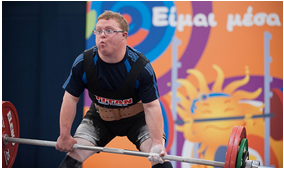 Yesterday we offered some tips for volunteering with schools. Today, we offer up some more tips for getting volunteer projects off of the ground. Have you ever planned a volunteer project in a school? Do you have any tips to share? Let us know in the comments!
Yesterday we offered some tips for volunteering with schools. Today, we offer up some more tips for getting volunteer projects off of the ground. Have you ever planned a volunteer project in a school? Do you have any tips to share? Let us know in the comments!
Use Community Resources
Schools are often short of resources. If you are running a sports program, arts club, or any other project that requires materials, you will probably need to solicit donations. Local businesses and restaurants may be willing to contribute. Community centers may have supplies or meeting space to share. Large projects can have fundraisers and donation drives to support their needs. The Volunteer Spot blog has some great ideas for fundraising.
Follow Through on Commitment
Once you start a project, teachers, staff, parents, and students will become dependent on your work. It is important to carry through with your promises and commitment. Never bite off more than you can chew and be honest about your time commitment and availability. If you begin to feel overwhelmed, remain open and honest with those you are working with and work together to seek a solution.
Evaluate Outcomes and Measure Success
As a volunteer, it is beneficial to evaluate your work and consider areas for improvement. Speak to teachers and school administrators beforehand to discuss appropriate benchmarks. There may be tangible measures of success such as improved grades (although some school policies don’t allow grades to be shared), test scores, knowledge level, or attitudes toward learning.
Or you could simply observe that you engaged a group of students, completed a large product, brought children safely to and from school, or filed a large stack of papers.
Recognize All Involved
 Throughout your involvement as a school volunteer, make sure to show appreciate to all those involved. This might include fellow volunteers, teachers, staff, or students. Below are tips:
Throughout your involvement as a school volunteer, make sure to show appreciate to all those involved. This might include fellow volunteers, teachers, staff, or students. Below are tips:
- Deliver recognition in a personal and honest manner. There’s no need to be disingenuous or to exaggerate someone’s contribution.
- Tailor your recognition and reward to the unique needs of the people involved. Have a variety of recognition and reward options available.
- Recognize contributions throughout the project – timing is crucial! Time delays weaken the impact.
- Have a clear message. Be sure that students and volunteers understand the criteria used to determine awards.
- Students can also be recognized through special certificates or small rewards such as erasers, pencils, journals, or rulers. (Note: toys and candy often become a distraction in the classroom.
The best way to recognize students and volunteers is to treat them with respect and give them support and praise throughout the project.
It’s vitally important to say thank you during the project and once the project is complete. Check out Eight Tips for Writing the Perfect Thank You Note
Reflect, Evaluate, and Move Forward
Reflection is strongly encouraged after every service experience. Reflecting as a group, with all the participating students and volunteers, can create a stronger sense of accomplishment and connection. This group conversation can often deepen student’s and volunteers’ understanding of the social issue your project addresses and increase their commitment to service and learning.
Here are some sample reflection questions to help facilitate a reflective discussion about the service project:
- What? What issue(s) was being addressed? What did you notice happening around you during the project? What were the results/outcomes of the project?
- So what? What did you think about during the project activity? How has it affected you?
- Now what? What are the larger issues that caused the need for you to participate in this service activity? How did your efforts help? What else needs to be done to improve these problems? How will you apply what you learned in the future?
In addition to reflection, it is important to evaluate the project. This means reviewing the effectiveness of the project components: the planning, coordination, delivery, implementation, logistics and management.
 At the end of a project, solicit feedback from students, volunteers, parents, and teachers. Feedback is a gift – use it as an opportunity to reflect on the overall management and implementation of the project. You can provide a feedback form (this is probably best if you are leading volunteers or students), or have less-formal conversations.
At the end of a project, solicit feedback from students, volunteers, parents, and teachers. Feedback is a gift – use it as an opportunity to reflect on the overall management and implementation of the project. You can provide a feedback form (this is probably best if you are leading volunteers or students), or have less-formal conversations.

 Are you looking to volunteer at your local school, but don’t know where to get started? You can follow these steps to find a volunteer role that suits you. Use them to determine how to make an impact, measure your success, and continue to grow and learn.
Are you looking to volunteer at your local school, but don’t know where to get started? You can follow these steps to find a volunteer role that suits you. Use them to determine how to make an impact, measure your success, and continue to grow and learn. Mentoring is an extraordinary commitment that can yield extraordinary results. Working with a single student or a small group, a mentor acts as a guide to the larger world outside of school and home, serves as a role model, helps students make positive life choices, listens to concerns, supports interests, and opens children’s eyes to new possibilities. Mentors dedicate time to helping students academically, socially, mentally, and physically, as necessary. Their roles include:
Mentoring is an extraordinary commitment that can yield extraordinary results. Working with a single student or a small group, a mentor acts as a guide to the larger world outside of school and home, serves as a role model, helps students make positive life choices, listens to concerns, supports interests, and opens children’s eyes to new possibilities. Mentors dedicate time to helping students academically, socially, mentally, and physically, as necessary. Their roles include: Establishing a role inside the busy beehive of a school can confound even the best-intentioned volunteer. Where do you begin? How can I put my skills to use? The answers to these common questions will get you started.
Establishing a role inside the busy beehive of a school can confound even the best-intentioned volunteer. Where do you begin? How can I put my skills to use? The answers to these common questions will get you started.
 Volunteers can gain from their experience in various ways. Whether they are parents or other community volunteers, most people benefit from building closer relationships with children and administration at their local school. Here are other potential rewards for volunteering:
Volunteers can gain from their experience in various ways. Whether they are parents or other community volunteers, most people benefit from building closer relationships with children and administration at their local school. Here are other potential rewards for volunteering: As I walked around the Healthy Athletes venue with my family and observed the real-time care of thousands of athletes, I was dazzled not only be the stories of transformation for the patients, but also by the evident joy and fulfillment of the volunteers. They were having the times of their lives. Jumping up, laughing and dancing with the Iranian Special Olympics team to demonstrate the ill-effects of smoking, fitting a pair of glasses on the nose of an athlete from India who will see clearly for the first time, or pulling out an abscessing tooth causing chronic pain from an athlete from Morocco.
As I walked around the Healthy Athletes venue with my family and observed the real-time care of thousands of athletes, I was dazzled not only be the stories of transformation for the patients, but also by the evident joy and fulfillment of the volunteers. They were having the times of their lives. Jumping up, laughing and dancing with the Iranian Special Olympics team to demonstrate the ill-effects of smoking, fitting a pair of glasses on the nose of an athlete from India who will see clearly for the first time, or pulling out an abscessing tooth causing chronic pain from an athlete from Morocco.
 As a heat wave grips much of the nation, it’s important to remember that sever weather like this is a lot like any other sever weather situation. While most types of severe weather or disaster have little to no warning that they are about to happen, heat waves can be forecasted ahead of time and heat-specific preparations can be made before the worst of the weather hits your area. Here are some tips to help you, and your neighbors, stay cool during some of the hottest parts of the year.
As a heat wave grips much of the nation, it’s important to remember that sever weather like this is a lot like any other sever weather situation. While most types of severe weather or disaster have little to no warning that they are about to happen, heat waves can be forecasted ahead of time and heat-specific preparations can be made before the worst of the weather hits your area. Here are some tips to help you, and your neighbors, stay cool during some of the hottest parts of the year. Drink plenty of water. Water helps to keep your body cool, even if it’s not too cool. Even if you’re not thirsty, keep water near you to drink throughout the day. If you feel thirsty, you’re already on your way to being dehydrated. Try to avoid caffeine and alcohol.
Drink plenty of water. Water helps to keep your body cool, even if it’s not too cool. Even if you’re not thirsty, keep water near you to drink throughout the day. If you feel thirsty, you’re already on your way to being dehydrated. Try to avoid caffeine and alcohol. Our guest post today comes from Melvin Freeman, Jr., PCI Chair of Columbia University’s chapter of
Our guest post today comes from Melvin Freeman, Jr., PCI Chair of Columbia University’s chapter of  Columbia University’s National Society of Black Engineers chapter has made valiant strides in their
Columbia University’s National Society of Black Engineers chapter has made valiant strides in their  Facebook and Skype, we were able to provide students of the Ghana PCI chapter, with books, supplies, and computers through our fundraising endeavors. Our hopes are to redirect some of the energy of our international initiatives toward more local efforts through our partnership with the Bronx Engineering and Technology Academy and the support of its students.
Facebook and Skype, we were able to provide students of the Ghana PCI chapter, with books, supplies, and computers through our fundraising endeavors. Our hopes are to redirect some of the energy of our international initiatives toward more local efforts through our partnership with the Bronx Engineering and Technology Academy and the support of its students. program. Because our NSBE chapter mentors are responsible for developing the students’ short and long term goals and holding the students accountable, they must first undergo a training series to ensure their mentoring methods are most effective. Recent college graduates also share on their careers, the educational path they took, and lend advice to the young aspiring engineers. Our college-based workshop sessions include:
program. Because our NSBE chapter mentors are responsible for developing the students’ short and long term goals and holding the students accountable, they must first undergo a training series to ensure their mentoring methods are most effective. Recent college graduates also share on their careers, the educational path they took, and lend advice to the young aspiring engineers. Our college-based workshop sessions include:
 Many companies have employee volunteer programs, but for many companies in Europe, Canada and the US these programs are underfunded, underdeveloped and underutilized. This blog series is meant to offer a number of compelling reasons why your business needs to invest (a bit more) in employee volunteering.
Many companies have employee volunteer programs, but for many companies in Europe, Canada and the US these programs are underfunded, underdeveloped and underutilized. This blog series is meant to offer a number of compelling reasons why your business needs to invest (a bit more) in employee volunteering. At this year’s
At this year’s 
